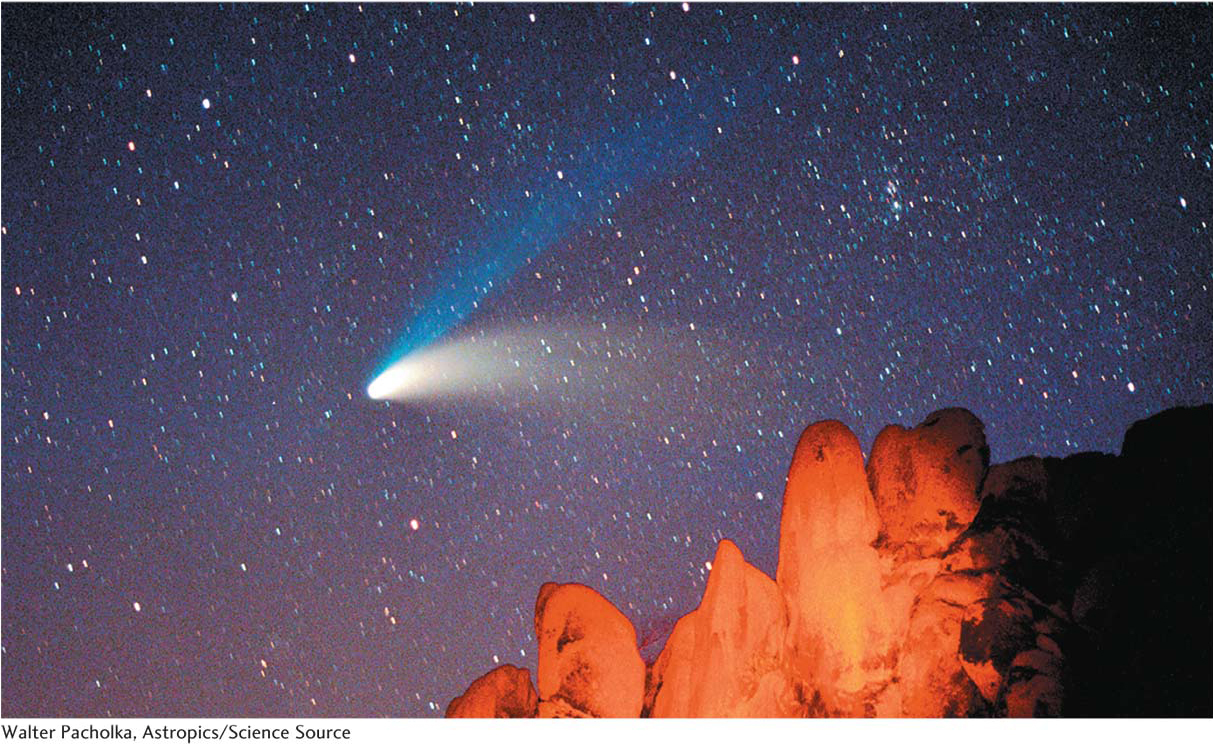Chapter Introduction
233

Vagabonds of the Solar System
WHAT DO YOU THINK?
 Are the asteroids a former planet that was somehow destroyed? Why or why not?
Are the asteroids a former planet that was somehow destroyed? Why or why not? How far apart are the asteroids on average?
How far apart are the asteroids on average? How are comet tails formed? Of what are they made?
How are comet tails formed? Of what are they made? In which directions do a comet’s tails point?
In which directions do a comet’s tails point? What is a shooting star?
What is a shooting star?
Answers to these questions appear in the text beside the corresponding numbers in the margin and at the end of the chapter.
234
Now that we have explored the properties of the planets and their moons in Chapters 6 and 7, we finish studying the objects orbiting the Sun in this chapter. In Section 4-
Focus Question 8-1
What objects are classified today as planets? What objects are classified as dwarf planets?
So far, Pluto, Ceres (also an asteroid), Eris (named after a Greek goddess), Makemake (pronounced mah-
In this chapter you will discover
the properties of dwarf planets and small solar system bodies
asteroids and meteoroids—
pieces of rock and metal debris orbiting the Sun comets—
objects orbiting the Sun that contain large amounts of ice and rocky debris meteors—
space debris that falls through Earth’s atmosphere meteorites—
space debris that lands on Earth the asteroid belt and the Kuiper belt, both filled with a variety of debris orbiting the Sun, including bound pairs of objects
the impacts from space 250 million and 65 million years ago that caused mass extinctions of life on Earth
wayward asteroids that could again threaten life on Earth